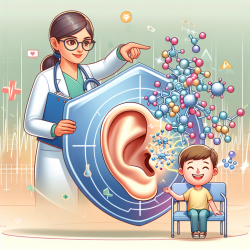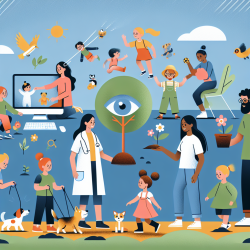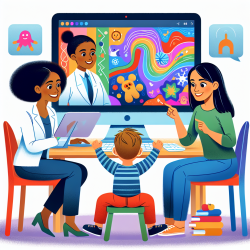Introduction
Cisplatin, a cornerstone chemotherapeutic agent, is pivotal in treating various pediatric cancers. However, its use is often marred by a significant side effect: cisplatin-induced hearing loss (CIHL). This condition is not only prevalent but also detrimental, particularly in children, as it can lead to impaired language acquisition, learning difficulties, and social challenges. Recent research has focused on preventing CIHL, with promising insights that can guide future clinical trials and enhance therapeutic outcomes for children.
Understanding the Research
The research article "Prevention of cisplatin-induced hearing loss in children: Informing the design of future clinical trials" by Minasian et al. provides critical insights into the challenges and strategies for preventing CIHL. The study highlights two significant trials, ACCL05C1 and ACCL0431, which focus on measuring and preventing CIHL through the use of otoprotective agents.
Key Findings and Recommendations
The research underscores the importance of using otoprotective agents as a strategy to prevent CIHL. However, developing these agents requires overcoming several methodological challenges, including:
- Ensuring that otoprotective agents do not interfere with the anticancer efficacy of cisplatin.
- Utilizing appropriate preclinical models that facilitate the translation of research into feasible clinical trials.
- Designing pediatric clinical trials that accommodate small sample sizes and are informed by preclinical models.
Practitioners are encouraged to adopt uniform, internationally accepted ototoxicity criteria, such as the SIOP-Boston Scale, to ensure consistency and accuracy in assessing hearing loss. Additionally, central review of audiologic data is recommended to improve grading accuracy and allow for multiple criteria comparisons.
Implications for Practitioners
For practitioners working with children undergoing cisplatin treatment, this research provides valuable guidance on improving clinical outcomes. By implementing the recommended strategies, practitioners can better prevent CIHL and enhance the quality of life for pediatric patients. Moreover, the research highlights the need for continued investigation into otoprotective agents and trial designs that prioritize both efficacy and safety.
Encouraging Further Research
The findings from ACCL05C1 and ACCL0431 are just the beginning. There is a growing interest in otoprotection research, with new agents in development and funding opportunities available. Practitioners are encouraged to engage in further research and collaborate with oncology groups to expand the options for effective otoprotection. By doing so, they can contribute to a paradigm shift in pediatric oncology that prioritizes the prevention of CIHL.
Conclusion
Preventing cisplatin-induced hearing loss in children is a critical area of research that requires innovative strategies and collaborative efforts. By adopting the insights from recent studies, practitioners can enhance clinical outcomes and support ongoing research to develop effective otoprotective agents. For those interested in delving deeper into the research, the original paper provides a comprehensive overview of the challenges and recommendations for future clinical trials.
To read the original research paper, please follow this link: Prevention of cisplatin-induced hearing loss in children: Informing the design of future clinical trials.










